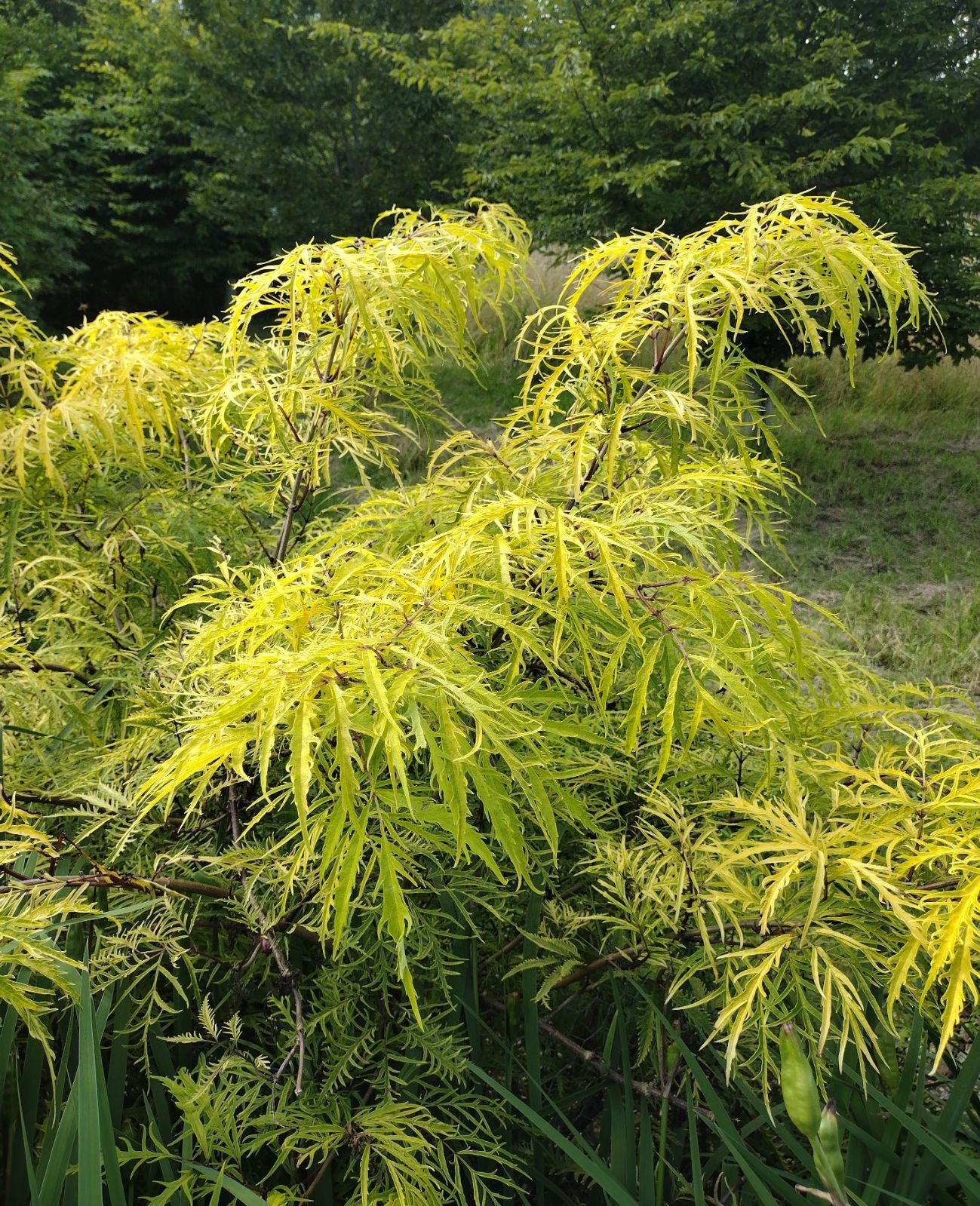Sambucus racemosa
Credits
Article from Bean's Trees and Shrubs Hardy in the British Isles
Recommended citation
'Sambucus racemosa' from the website Trees and Shrubs Online (treesandshrubsonline.
Genus
Common Names
- Red-berried Elder
A deciduous shrub, 8 to 12 ft high, and as much through; young bark glabrous, pith white. Leaves pinnate, 6 to 9 in. long, composed of five leaflets, which are oval or ovate, 2 to 4 in. long, 3⁄4 to 13⁄4 in. wide, taper-pointed, sharply and regularly toothed, glabrous on both surfaces. Flowers produced during April in terminal pyramidal panicles 11⁄2 to 3 in. high, scarcely so much wide; yellowish white. Berries scarlet; ripe in June and July; packed tightly in panicles.
Native of Europe, Asia Minor, Siberia, and W. Asia, cultivated in England since the 16th century. This very beautiful-fruited shrub is only occasionally seen in perfection in this country, although it grows well and flowers abundantly. It fruits admirably near Paris, and those who have visited the upland valleys of Switzerland in July will have marked its great beauty there. Whilst not a native of Britain it has established itself in a remarkable way in Scotland. On the slopes of the hills bordering the Tweed in one area, at least, above Peebles, it occurs in broad masses.
It would be an exaggeration to assert that S. racemosa never fruits in southern England, for it has done so in many places, but it cannot be regarded as a reliable fruiter in all areas. Why this should be is uncertain. Some gardeners have reported that fruits form but are taken by the birds before they have coloured. It has also been suggested that some seedlings and clones are self-incompatible, i.e., do not set fruit when self-pollinated, or pollinated by another plant of the same clone. But if we are denied too frequently its attractive fruits, it has on the other hand sported into a number of coloured and cut-leaved forms, which are amongst the best of their class, and thrive well.
From the Supplement (Vol. V)
† cv. ‘Sutherland Gold’. – A seedling of ‘Plumosa Aurea’, of a less intense gold but said to hold its colour better than does its parent when grown in full sun, and to be more vigorous. Raised in Canada. Of doubtful value for British gardens.
† S. sieboldiana (Miq.) Graebn. S. racemosa var. sieboldiana Miq. – At one time confused with S. racemosa, this species differs in its laxer inflorescences and smaller fruits, 1⁄8 in. or slightly more wide. It is variable in the colour of its fruits, from bright red to yellow, with intermediate shades.
The present plants at Kew are from seeds collected in Japan by Brian Halliwell. It also occurs in Korea and has a variety that extends into the Ussuri region of Russia.


